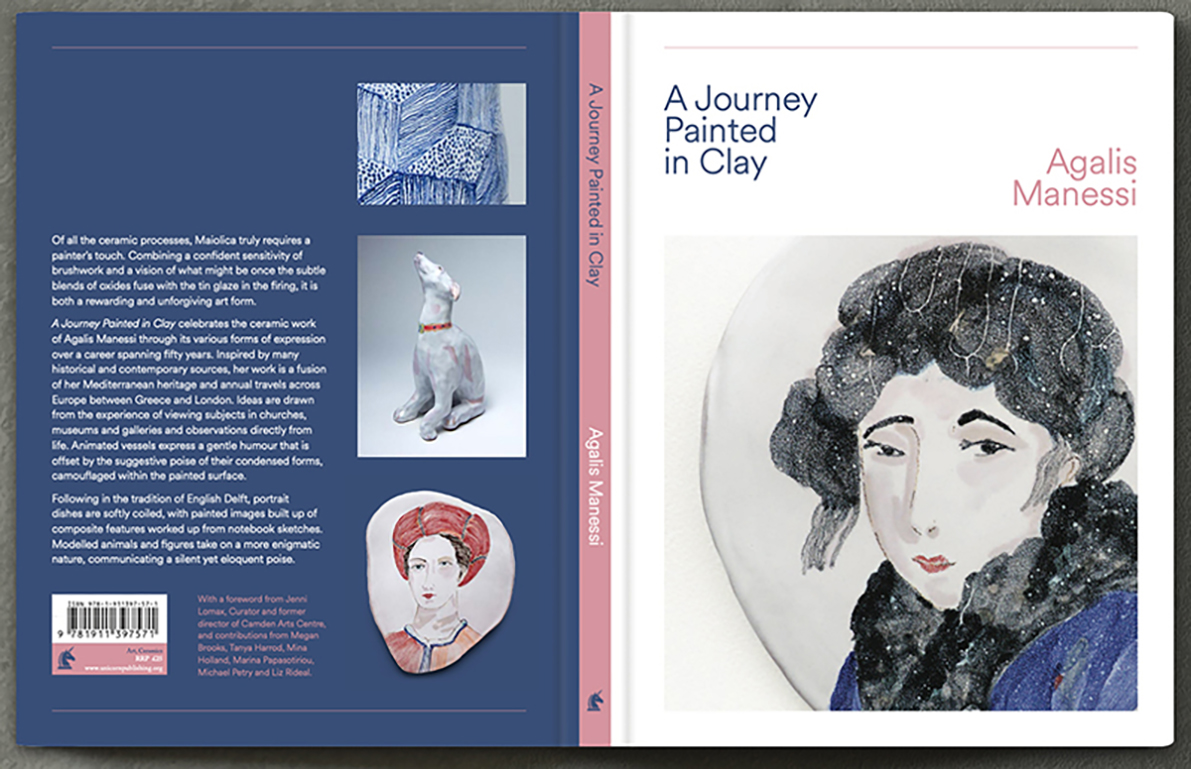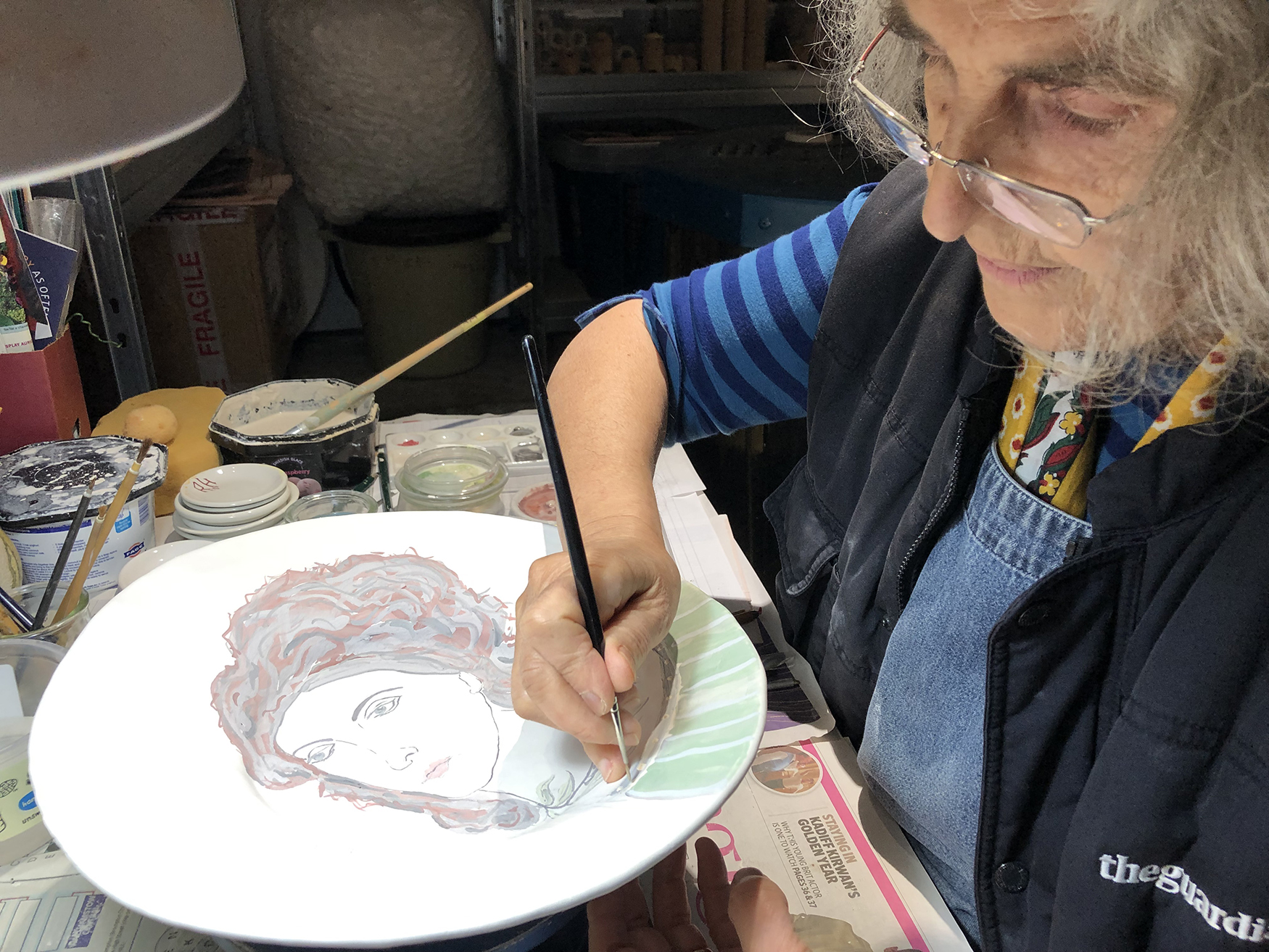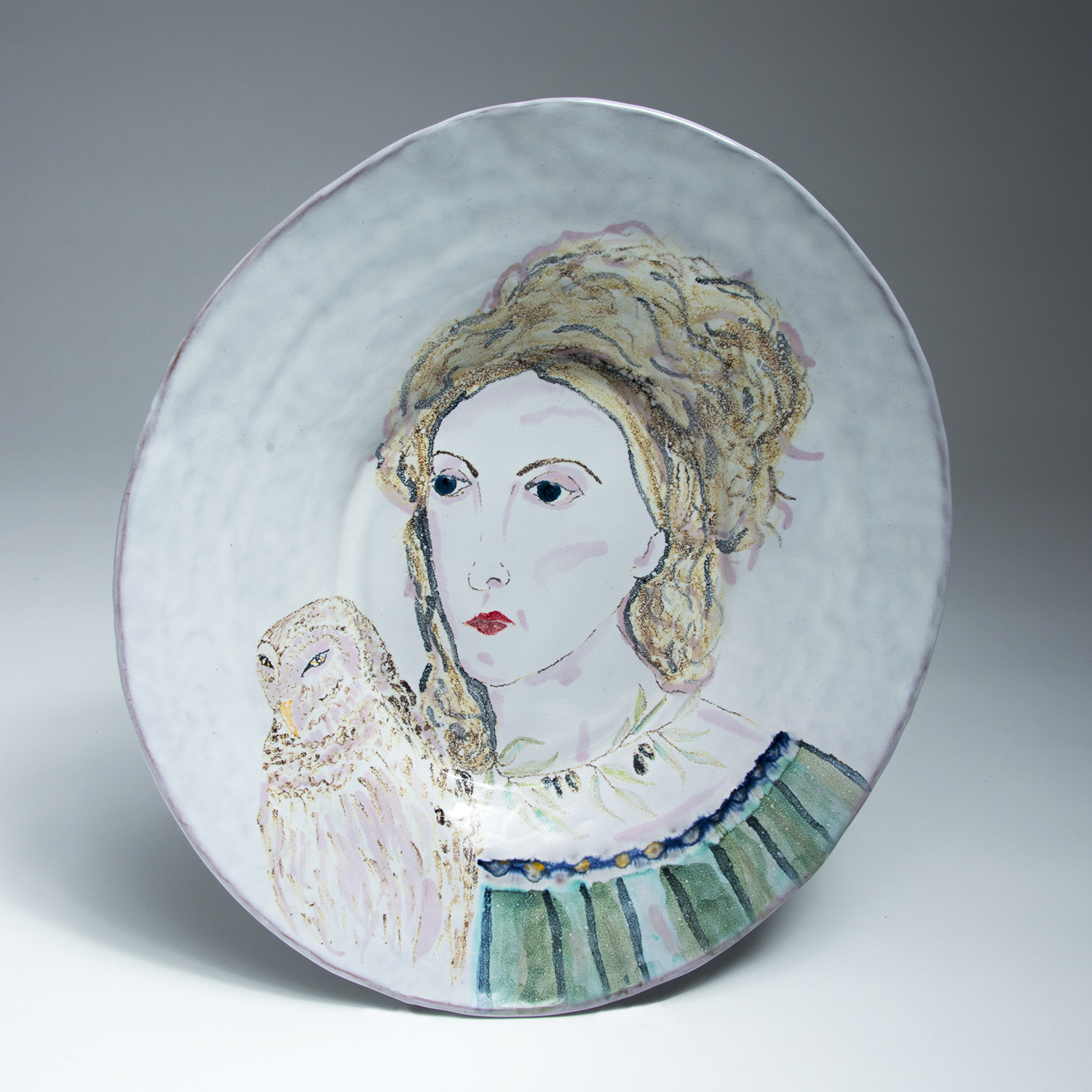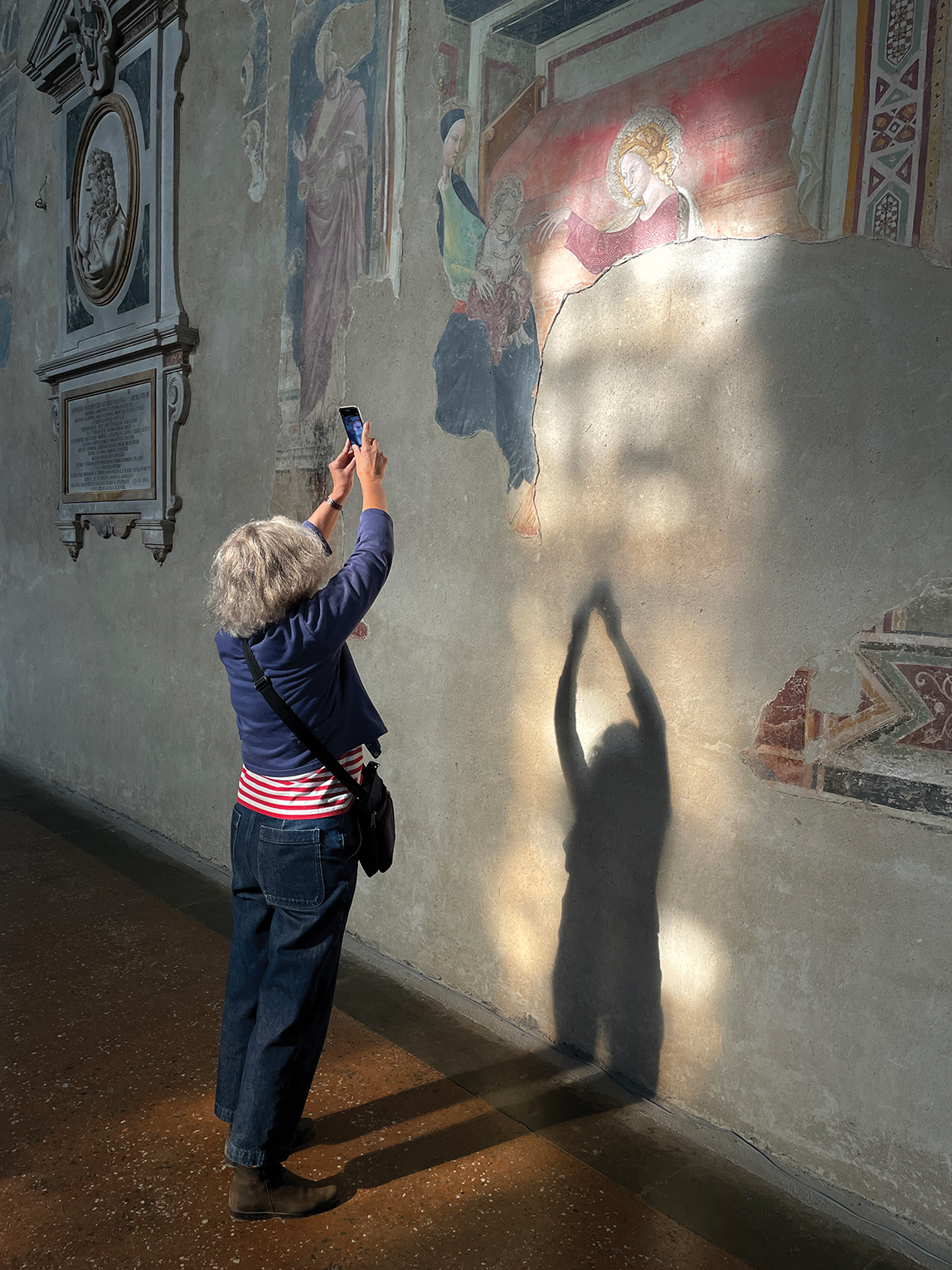A Journey Painted in Clay
From ancient cultures, across continents and civilizations, the art of clay has been practiced throughout Greek culture for centuries, tracing a long and interesting course through antiquity to today. The first basic material of potter’s expression is clay in all it’s forms, with a huge diversity of properties. These present complex characteristics that enable the creation of an immense wealth of ceramic artefacts.
My making process is simple and as timeless as the medium itself. Coils of clay rolled out, joined and pinched between the fingers evolve into a range of forms; vessels, dishes and platters. Animals and figures are modelled from solid clay squeezed into shape to give life to the nascent form within before being hollowed and fired. The next part of the process involves glazing with the white tin glaze and painted to reveal their final character. A process known as Maiolica.
Maiolica has been practiced since 900AD in Mesopotamia and later from 1500AD in Spain and Italy with its ornate Istoritao dishes. Objects are made using a red terracotta or similar earthenware clay, which once fired is dipped in a glazing solution containing tin oxide that gives its characteristic white opaque finish. The object is subsequently painted with a mixture of metal oxides such as copper, cobalt, iron, manganese that give a wonderful range of colours after firing.
Perhaps of all the ceramic processes Maiolica requires a painter’s touch. A confident sensitivity of brushwork balanced with a vision of what might be, once the subtle blends of oxides fuse with the tin glaze in the firing, it is both a rewarding and unforgiving art form. It is a technique that transforms a monochrome object into a sophisticated creation where the result oscillates between a utilitarian object and one that could be defined as a work of art.
Inspiration for the work comes from many historical sources, a fusion of my Mediterranean heritage and annual travels across Europe to London. Ideas are drawn from the experience of viewing subjects in churches, museums and galleries and observations directly from life. The images are inspired by portraits and animals depicted by a variety of Renaissance painters such as Pisanello and Gentile di Fabriano, Flemish masters like Lucas Cranach, English artists Edwin Landseer, George Stubbs, and the Fauvist work of Maurice Dennis and Franz Marc. Contemporary subjects may be from fleeting observations in the newspaper or on tv.
Marina Papasotiriou. Curator, National Gallery of Art - Corfu
In Print:
A Journey Painted in Clay
2023
Hardback pp.128
ISBN: 9781911397571
Available @ Unicorn Publishing
A Journey Painted in Clay celebrates the ceramic work of Agalis Manessi through its various forms of expression over a career spanning fifty years. Inspired by many historical and contemporary sources, the work is a fusion of her Mediterranean heritage and annual travels across Europe between Greece and London. With a foreword by Jenni Lomax, curator and former director of Camden Arts Centre, and contributions from Megan Brooks, Tanya Harrod, Mina Holland, Rob Kesseler, Marina Papasotiriou, Michael Petry and Liz Rideal.
![]()
Works on film:
![]()
![]()
![]()
The film, Maiolica Magic takes you to my two studios, in London and Corfu. I describe my simple methods of working with clay, primarily with my hands, to create a range of modelled animals and figures as well as coiled and pinched vessels and dishes. The film shows my technique for painting on the raw glaze with oxides and stains and goes through the process of making, glazing, painting and firing to the glorious fired result.
The film, A Journey Painted in Clay, created for a solo exhibition at the Municipal Gallery of Corfu and Diapontia Islands, traces my journey through galleries, museums and churches across Europe to reveal some of the sources behind the work.
![]()
![]()
![]()
Recording fresco in San Domenico Arezzo, Italy
Snapping Italian mailoica in the Museum of Fine Arts and Archeology, Besançon, France
Franz Marc, Dog lying in the snow. Städel Museum, Franfurt, Germany
From ancient cultures, across continents and civilizations, the art of clay has been practiced throughout Greek culture for centuries, tracing a long and interesting course through antiquity to today. The first basic material of potter’s expression is clay in all it’s forms, with a huge diversity of properties. These present complex characteristics that enable the creation of an immense wealth of ceramic artefacts.
My making process is simple and as timeless as the medium itself. Coils of clay rolled out, joined and pinched between the fingers evolve into a range of forms; vessels, dishes and platters. Animals and figures are modelled from solid clay squeezed into shape to give life to the nascent form within before being hollowed and fired. The next part of the process involves glazing with the white tin glaze and painted to reveal their final character. A process known as Maiolica.
Maiolica has been practiced since 900AD in Mesopotamia and later from 1500AD in Spain and Italy with its ornate Istoritao dishes. Objects are made using a red terracotta or similar earthenware clay, which once fired is dipped in a glazing solution containing tin oxide that gives its characteristic white opaque finish. The object is subsequently painted with a mixture of metal oxides such as copper, cobalt, iron, manganese that give a wonderful range of colours after firing.
Perhaps of all the ceramic processes Maiolica requires a painter’s touch. A confident sensitivity of brushwork balanced with a vision of what might be, once the subtle blends of oxides fuse with the tin glaze in the firing, it is both a rewarding and unforgiving art form. It is a technique that transforms a monochrome object into a sophisticated creation where the result oscillates between a utilitarian object and one that could be defined as a work of art.
Inspiration for the work comes from many historical sources, a fusion of my Mediterranean heritage and annual travels across Europe to London. Ideas are drawn from the experience of viewing subjects in churches, museums and galleries and observations directly from life. The images are inspired by portraits and animals depicted by a variety of Renaissance painters such as Pisanello and Gentile di Fabriano, Flemish masters like Lucas Cranach, English artists Edwin Landseer, George Stubbs, and the Fauvist work of Maurice Dennis and Franz Marc. Contemporary subjects may be from fleeting observations in the newspaper or on tv.
Marina Papasotiriou. Curator, National Gallery of Art - Corfu
In Print:
A Journey Painted in Clay
2023
Hardback pp.128
ISBN: 9781911397571
Available @ Unicorn Publishing
A Journey Painted in Clay celebrates the ceramic work of Agalis Manessi through its various forms of expression over a career spanning fifty years. Inspired by many historical and contemporary sources, the work is a fusion of her Mediterranean heritage and annual travels across Europe between Greece and London. With a foreword by Jenni Lomax, curator and former director of Camden Arts Centre, and contributions from Megan Brooks, Tanya Harrod, Mina Holland, Rob Kesseler, Marina Papasotiriou, Michael Petry and Liz Rideal.

Works on film:



The film, Maiolica Magic takes you to my two studios, in London and Corfu. I describe my simple methods of working with clay, primarily with my hands, to create a range of modelled animals and figures as well as coiled and pinched vessels and dishes. The film shows my technique for painting on the raw glaze with oxides and stains and goes through the process of making, glazing, painting and firing to the glorious fired result.
The film, A Journey Painted in Clay, created for a solo exhibition at the Municipal Gallery of Corfu and Diapontia Islands, traces my journey through galleries, museums and churches across Europe to reveal some of the sources behind the work.



Recording fresco in San Domenico Arezzo, Italy
Snapping Italian mailoica in the Museum of Fine Arts and Archeology, Besançon, France
Franz Marc, Dog lying in the snow. Städel Museum, Franfurt, Germany





